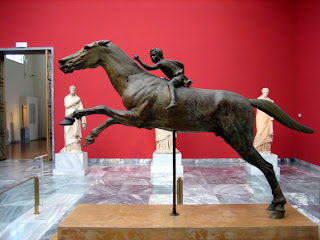MODERN ART - SURREALISM
Surrealism originated in the late 1910s and early ’20s as a literary movement that experimented with a new mode of expression called automatic writing, or automatism. It proposed that the Enlightenment—the influential 17th- and 18th-century intellectual movement that championed reason and individualism—had suppressed the superior qualities of the irrational, unconscious mind. Surrealism’s goal was to liberate thought, language, and human experience from the oppressive boundaries of rationalism. Officially consecrated in Paris in 1924 with the publication of the Manifesto of Surrealism by the poet and critic André Breton (1896–1966), Surrealism became an international intellectual and political movement. The visual artists who first worked with Surrealist techniques and imagery were the German Max Ernst (1891–1976), the Frenchman André Masson (1896–1987), the Spaniard Joan Miró (1893–1983), and the American Man Ray (1890–1976).
The Persistence of Memory, 1931
Oil painting on canvas
By Salvador Dali
The Persistence of Memory is by far Salvador Dali’s most recognizable painting, and there are many references to it in popular culture. Although it was conjectured that the soft melting watches were the result of Dali’s interpretation of the theory of relativity, Dali himself state that their inspiration was camembert cheese melting under the sun. The sequence of melting clocks in a disjointed landscape is the depiction of a dream that Dali had experienced, the figure in the middle of the painting being the face of the dreamer himself. The general interpretation is that the painting, which portrays many melting watches, is a rejection of time as a solid and deterministic influence.
This iconic and much-reproduced painting depicts time as a series of melting watches surrounded by swarming ants that hint at decay, an organic process in which Dali held an unshakeable fascination. Elaborated in the frontispiece to the Second Surrealist Manifesto, the seminal distinction between hard and soft objects, associated by Dali with order and putrefaction respectively, informs his working method in subverting inherent textual properties: the softening of hard objects and corresponding hardening of soft objects. It is likely that Dali was using the clocks to symbolize mortality (specifically his own) rather than literal time, as the melting flesh in the painting's center is loosely based on Dali's profile. The cliffs that provide the backdrop are taken from images of Catalonia, Dali's home.




Comments
Post a Comment